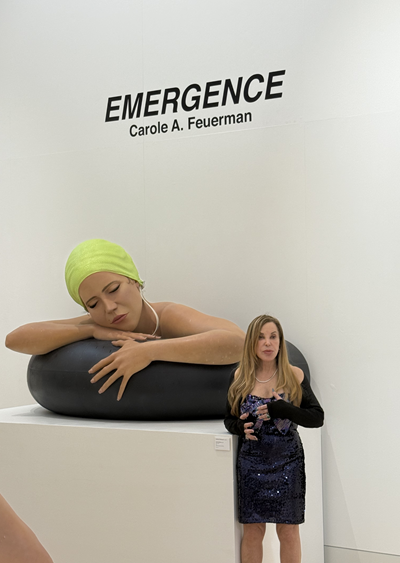
Ready in 12 months one of the most beautiful routes in Europe
The signing of the contract between the municipality of Athens, through the agency “regeneration of Athens A.E ” and the contractor company-which emerged from an open competition – marks the immediate start of the works for the redevelopment of Vasilissis Olgas Avenue and the creation of an open space to the public, which will unify the Olympeion with the Zappeion and the National Garden and will complete the archaeological route, from Kerameikos to Ardittos Hill and the Panathenaic Stadium.
The mayor of Athens Costas Bakoyannis, in a statement, immediately after the signing of the contract at the City Hall of Athens, stressed: “today we are taking another step for the realization of the vision of Melina Mercouri and Antonis Tritsis with the unification of the Olympion with the Zappeion and the National Garden. As we are proud today of Dionysiou Areopagitou, we will be tomorrow for Vas. Olga. The Acropolis and Kallimarmaro come closer with one of the most beautiful routes in Europe”.
On his part, the CEO of ” Anaplasis Athens A.E.”Chronis Akritidis, said:” after 26 years, a breath-taking project for the city is becoming a reality. We are happy that the redevelopment of Avenue B. Olga enters immediately into the path of realization, creating the conditions for a quality and better life in the city center”.
The architectural form of the pedestrian street
Between the archaeological site and the neoclassical geometry of the Zappeion, the design of the pavement is carried out with writing corresponding to a modern construction. The axes of the connection of the pedestrian street with Dionysiou Areopagitou and The Hill of Ardittos constitute the basic elongated frame, around which the pedestrian street is organized. In the transverse sense, the axis of the Zappeion, the end of which in the pedestrian street of Vasilissa Olga is formed by the placement of square marble benches and low cylindrical structures, is decisive for the design of the pedestrian walkway. The aim of these constructions, apart from their use as living rooms, is to create a plastic configuration that will emphasize the central axis of the Zappeion.
The fronts of the pedestrian street towards Amalias Avenue and Vasileos Konstantinou Avenue are formed with plantings, in order to create the image of a single, not interrupted by the passage of cars space, from Vasilissis Sofias Avenue to Athanasiou Diakou Street. An oblique transverse axis just outside the entrance of the archaeological site symbolizes the possible access to the entrance of the Themistocleian wall.
Between the two symmetrical entrances to the central axis of the Zappeion Gardens, which form an angle of about 80 degrees to Vasilissis Olgas Avenue, a free configuration of hard surfaces and green surfaces is planned, aiming to contribute to the relaxation of the image of the corridor. This free configuration is formed by a succession of circular arcs concentric or heterocentric. The formation with the succession of opposite directions and tangent circular arcs to the eastern side of the central axis of the Zappeion, is formed in a milder way, due to the milder slope.
The configuration of the hard and planting surfaces along the entire length of the sidewalk is done in a way that does not affect the existing large trees, including the remarkable cypresses and olives located on the central island of the Avenue. Where necessary, the existing tree lines are supplemented and important new surfaces are formed with low and high planting. Plants of the Attica Flora will be used to be compatible with the existing vegetation and to create an atmosphere familiar to visitors and passers-by.
The pavements are designed with strips of marble or curated concrete, placed transversely to the walkway, in order to give rhythm to the movement. Some lanes have a radial direction and aim to harmonise the pavers with important elements of the pedestrian surface, such as Hadrian’s Gate, the statue of Lord Byron and the Zappeion shaft. The statue of Alexander the great that was placed at the junction of The Avenues Vasilissis Amalias and Vasilissis Olga harmonizes, as far as possible, with the configuration.
The surfaces within the formwork strips are formed with Slate. The placement of blocks for the climb lane shall be provided between the formwork lanes of the track lanes in order to prevent as far as possible the passage of vehicles and asphalt for the descent lane to be used for movement to and from the Tennis Club. On the outside of the tracks, Pebble surfaces will be constructed that will delimit the area of safe movement of pedestrians.
The study provides for the maintenance, renovation, completion and redevelopment of the Zappeion railings, as well as the National Gymnastic Association, the swimming pool and the Tennis Club.
Unhindered access for people with disabilities
The configuration of Vasilissis Olgas Avenue ensures unhindered access for people with disabilities throughout the pedestrian area. Since the only imbalance along the entire Avenue is the 5cm-high kerb at the beginning and end with a steepness at the edge, no ramps are required for the movement of people with mobility problems. For people with vision problems, their route will be marked with 30 cm wide strips, made of Off-White incised plates.
158 new trees and 8,538 shrubs – new fixtures and masts
The total area of the redevelopment is 28,360 t.m. In addition to surface configurations and equipment, it includes:
* Planting 158 trees, 8,538 shrubs and low vegetation surfaces.
* 112 light masts and 156 light fixtures, not including the light masts and bodies of the new tram stop.
* 46 new masts for the tram or trolley with single cantilever and 11 masts with amphiprole.
Protection and promotion of Antiquities
On the south – southwest pavement of Vasilissis Olgas Avenue and at a distance of 70 meters west of the entrance of the archaeological site, there are surface remains of a Roman valaneion. After the necessary excavation works have been carried out, a construction will be formed for their protection and promotion.
In addition to Vasilissis Olgas Avenue, the area around Hadrian’s Gate will be reconfigured with stabilized soil and in a way that drains rainwater, so as to prevent damage to the foundation of the monument.
No changes to existing traffic-tram stops
With the construction of the works of pedestrianization, the space will be delivered entirely to pedestrians, with the exception of:
* The tram’s ascent and descent lines to and from Syntagma. The descent Strip will also be used for entry and exit E.I.Allah. cars to and from the Tennis Club and for the passage of utility vehicles.
* A trolley lane from Pagrati to Syntagma.
* An entrance lane of E.I.Allah. car to the parking area of “Aegli” in Zappeion. Their exit will be from the small alley located at the southeast end of Fokianos gym.
The tram stop in the direction towards Syntagma, which is located on Ardittos Avenue, will be moved to the pedestrian street of Vasilissis Olgas Avenue, opposite the stop of the opposite direction, in front of the entrance of the National Gymnastic Association. One of the two stops of the trolleybus climb Lane is located at the height of the tram stop in order to ensure transit between the two means. The second stop of the Trolley will be located opposite the entrance of the archaeological site of the Olympion.
Project history and budget
The redevelopment study of the avenue had been carried out in 2011-2014 by the consolidation of archaeological sites A.E (E.P.Allah.P.) and was carried out by the Office of architectural and urban planning studies ” Giorgos Provelegios, Niobe Provelegiou and Associates E.E.». In mid-2020, the Municipal Authority of Athens proceeded to update the study under the responsibility of ” Athens regeneration A.E.». The updated study was approved by the Central Council of Architecture and subsequently by the Athens City Council. The project has a conventional budget of 4,606,819.10 (excluding VAT) and is funded by the Ministry of infrastructure and Transport.







Leave A Comment